In Zacatecas we visited an old ex-convent that houses the Mask Museum. The bell tower and upper facade fell down at some time, probably from an earthquake and was never rebuilt.
However, the rubble was not lost but put to good use to construct a wall. There are cornices and small statues that were saved.
Here's a wall inside the exterior walls. See where the lintel over the window has rotted away.
Here's another old wall that has withstood the weather to varying degrees. The adobe brick on the right has lasted pretty well when covered by a lime and mortar mix. Some of the bricks on the left are lasting better than the mortar that surrounds them.
Here is an example of a mask that was made out of available materiels; an armadillo shell and deer antlers. (And more masks following in which you probably have less interest than I do--obviously. If only I could have such wonderful articles for MY mask collection!)
These masks and others following are carved of wood.
This is a crocodile "suit" which was worn around the waist of a dance participant. All carved of wood.
More primitive masks from the early 19th century.
This masks reminds me of a Japanese Noh mask used in theater. It's one of my favorites in this collection.
More and more . . .
Many masks are "fantismic"; out of the carvers dreams, or nightmares! But these are devils masks, of which there are a number of differing faces.
I wonder what the inspiration was for this mask . . .
These are fairly contemporary using window screening for the mask with painted steel wool for the beards. Pretty unique!
These masks show the influence of black slaves from the Caribbean on Mexican artesania.
The mask carvers had a sense of humor:
A contemporary mask showing the influence of the Anglos. The hair is made from the same material that is used to make long handled brushes for removing cobwebbs from one's house.
Sorry about the lack of focus on this and the previous photo--the museum didn't allow flash photography.
These show the use of goat horns and deer antlers.
Just look at the realism of this mask.
This is an example of "armor" made of carved wood. The small pieces in the foreground are forearm covers.
Note the reflection of the back side of this wooden "armor".
Probably originally from the jungle area of southern Mexico.
Note the blue, black and white set of horns as well as a single red one, surrounded by snake heads.
One more "nose" mask . . .
This mask is made of paper mache' and probably used during Day of the Dead celebrations.
Leopard masks with boars teeth.


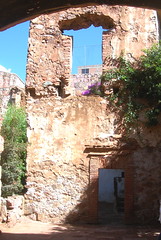

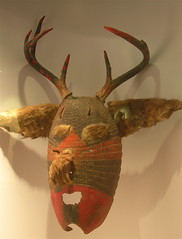

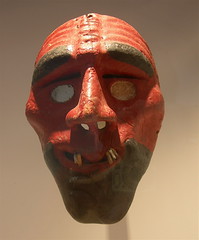

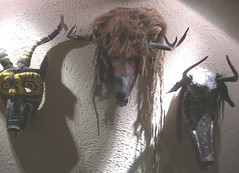
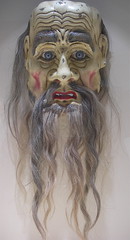
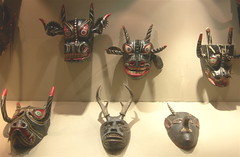



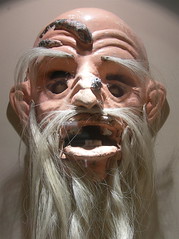




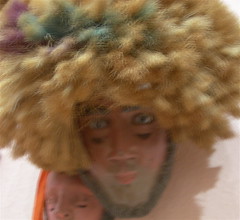
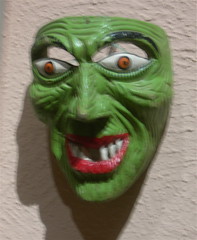

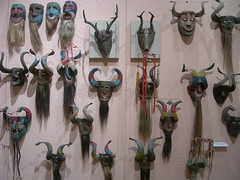
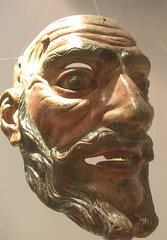

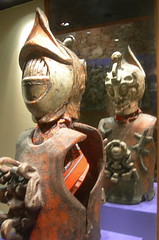
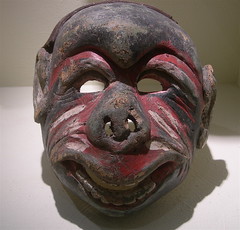

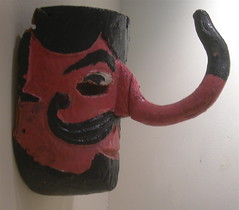
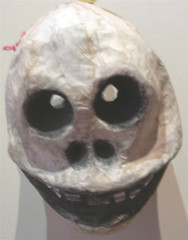
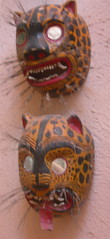


3 comments:
I found your blog from Steve cottens' blogroll. The first line in your "reflections on my life in mexico" hooked me and i've read quite of your posts now.
I hope we get to see and hear more details about your indigo project. Have you heard of Enid Marx? I a bit of a fan of her block printing. Some of William Morris' better known patterns are made by indigo discharge with other colors built up on top.
Anyway, hope you blog til you're blue, or indigo.
I too found your blog on Steve Cotton's blog. I met him the other week in Salem, I am from Portland, and he was so insightful about Mexico. I want to make my move down in May of 2011. I am retired now and excited to check it all out. I appreciate these blogs, they are so informative to me, they give me to live my dream.
I hope I can email you and get to know you better.Keep up the great work. Thanks again for being generous with your thoughts, time and words. Marilyn
Thanks for stopping by, Marilyn. I'm from Portland and found Steve's blog accidentally. I don't follow his blog because he is from Oregon, but rather because I find his writing interesting, his subjects inspiring and because he's just plan "FUN". Email me privately anytime and I will be happy to answer any questions you may have about life in Mexico.
Pat
Post a Comment